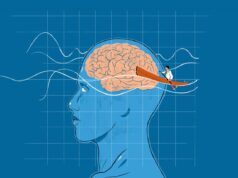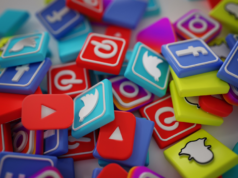
Excessive alcohol consumption may lead to addiction, and consequentially you may need medical help to heal from it,” say addiction experts from https://www.unitedrecoveryca.com/. This can be difficult to digest for someone fond of drinking – perhaps too fond to want to hear (even well-meaning) critiques on alcohol consumption, let alone consciously manage their intake accordingly.
However, your well-being is extremely important. And drinking too much too frequently can be extremely harmful. Here’s what you need to know about excessive alcohol intake.
The US And Alcohol
Alcohol by itself isn’t something that needs to be ‘fought’. Excessive use of it, however, is. Before talking about awareness programs that can help fight this problem, it is important to understand the distinction between moderate and extreme alcohol use, whereby the latter can be cause for concern.
Considering that alcohol is regarded as the go-to drink on occasions of happiness and melancholy alike, it comes as no surprise that more than 85% of people in the US reported drinking it within the past year, and more than 50% in the past month, as per a survey held in 2019.
Then comes heavy alcohol use and ‘binge’ drinking. While the definitions for these terms differ slightly from one organisation to the other, they can both be loosely classified as consuming multiple alcoholic drinks within a short period, ranging from a few hours to a few days (typically, less than two weeks).
According to the aforementioned survey, over a quarter of adults reported binge drinking, while 6.3% reported heavy alcohol use, within the past month.
The real trouble happens when one penetrates the dangerous zone of ‘high-intensity drinking’, whereby alcohol consumption skyrockets to twice or thrice that of binge drinking levels.
As per the survey results, the people whose consumption is twice as much are at 70 times greater risk of being rushed to the hospital for an emergency department (ED) visit, while for those at thrice the level, the likelihood of such a visit increases to a whopping 93 times. Overall, 18.5% of all ED visits are due to alcohol, and over 140,000 deaths are recorded annually in the US owing to excessive alcohol intake.
The Fight Against Alcohol Use Through Awareness

Although the stats present a concerning picture, not all hope is lost yet. It is precisely due to the concerns of the people and the US government regarding this subject area that strategies have been devised by them to fight back against the perils of Alcohol Use Disorder (AUD) – and successfully so! Awareness campaigns and social media have been particularly helpful in enabling them to achieve this mission.
Substance Abuse and Mental Health Services Administration
An example is the “Talk. They Hear You.” campaign launched by the Substance Abuse and Mental Health Services Administration (SAMHSA), a governmental agency that focuses on public health endeavours for improved behavioural health of the public.
Given how much of an impact the proactive involvement of family members can have in helping someone manage their health (including AUD), SAMHSA catered this campaign towards parents and caregivers. Those closest to them can help prevent the youth from falling victim to excessive alcohol usage.
This is crucial in the backdrop of about 414,000 adolescents between the ages of 12 to 17 years having AUD in the US.
Originally, the campaign was centred around aiding parents who had children between the ages of 9 to 15 years, as prevention for youngsters beginning to drink. In 2018, however, this changed as the program expanded its horizons to cater to the needs of children under 21 years, in line with research findings.
The campaign is aimed at equipping parents and caregivers with the necessary skills and knowledge to constructively influence their kids’ outlook towards underage drinking, along with other drugs.
The hallmark of a great social awareness program lies in its ability to cohesively bring together multiple societal actors for the combined benefit of the said groups and the society as a whole.
SAMHSA, for one, has recognized this as it has used its campaign resources to not just help out parents and primary caregivers, but also school leaders, student assistance professionals, and entire communities looking for a future free of the worries of AUD prevalence.
The Age of Social Media

Where social media has its drawbacks (which include promoting things like alcohol use to an unhealthy degree), it can also be used the other way around – and it has been.
SAMHSA is utilising multiple social media platforms (and the most famous ones at that) to raise awareness against AUD through its hashtag #TalkTheyHearYou, its podcast, and a recently released mobile app has been one proof of this. Nonetheless, there is more to it.
April was declared the National Alcohol Awareness Month some three and a half decades ago in the US; the tradition is alive to date. Founded by the National Council on Alcoholism and Drug Dependence (NCADD), this month-long awareness program brings together the whole of society through the power of social media in a bid to fight the US’ alcohol problem. With personalised campaigns surrounding this theme, the initiative has been running successfully and has impacted countless people.
The role of awareness programs and social media in destigmatizing AUD, raising awareness of it, and uniting organisations, private providers, governments, and charities for the singular cause of an alcoholism-free US has been remarkable, to say the least.
Summary
Excessive alcohol use is a serious problem facing the US right now due to the list of damaging effects it tends to have on its consumers.
- Curtailing alcohol addiction and excessive drinking is the need of the hour.
- The youth of America is also at risk.
- SAMHSA is making constant efforts to spread awareness about excessive drinking through all kinds of channels.
- It has mobilised campaigns aimed at adults, young people, and their loved ones.
- Awareness programs and social media are helping with prevention by bringing attention to the issue.
We must all unite for a single, noble cause, aimed at producing a safer society for everyone.












